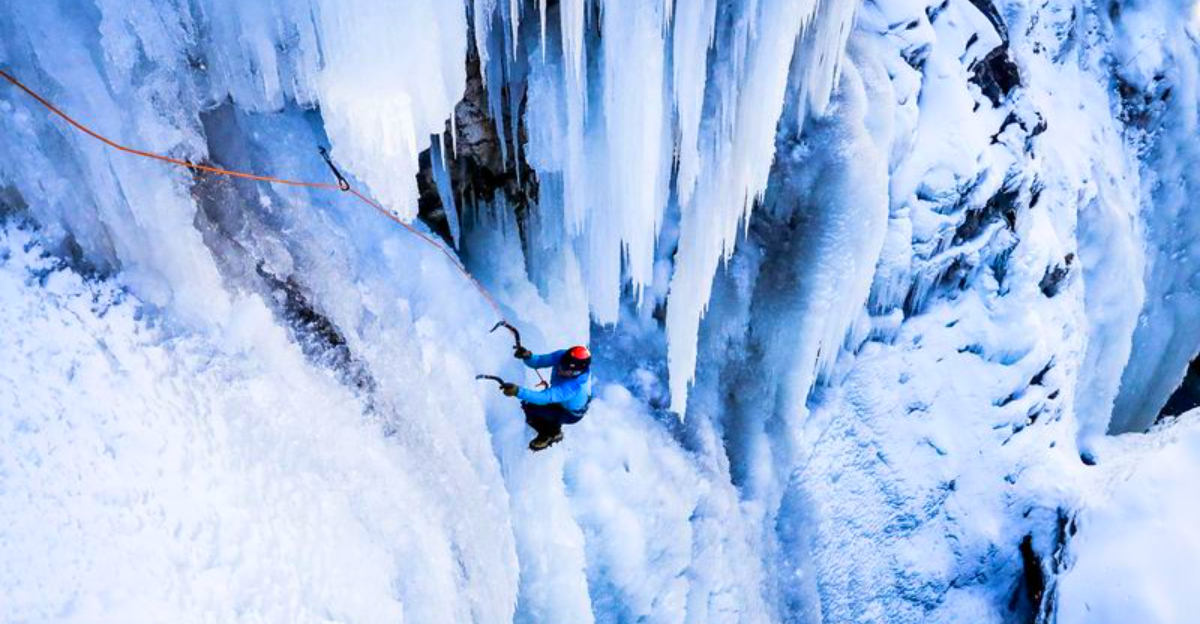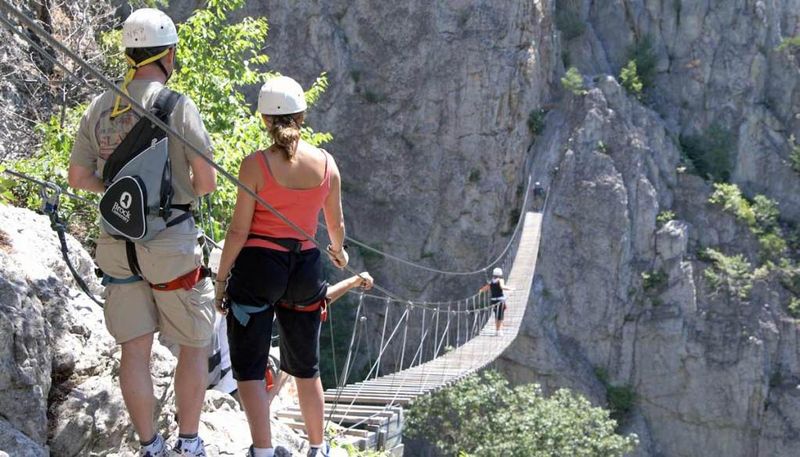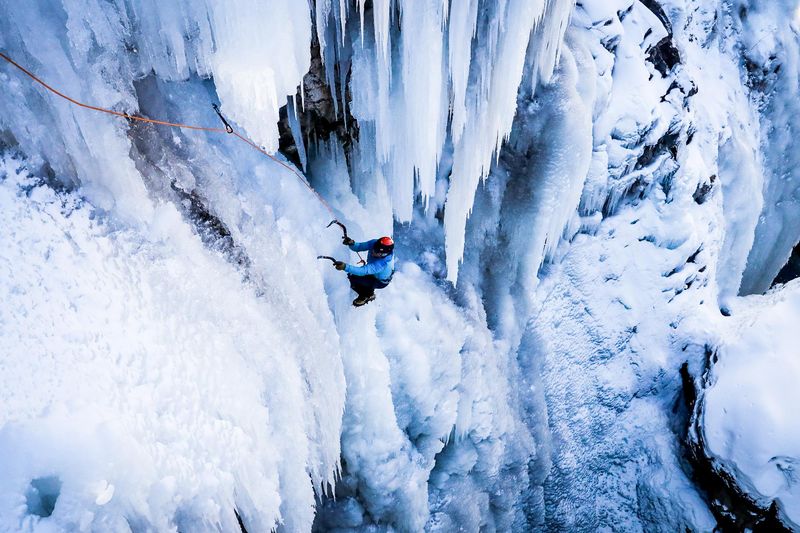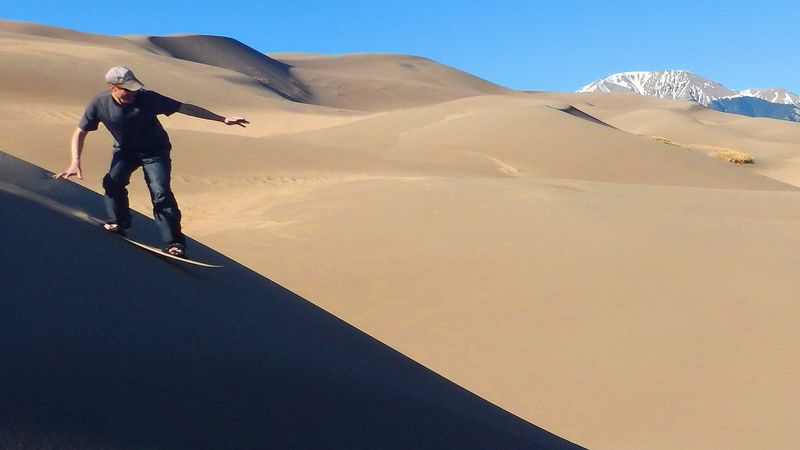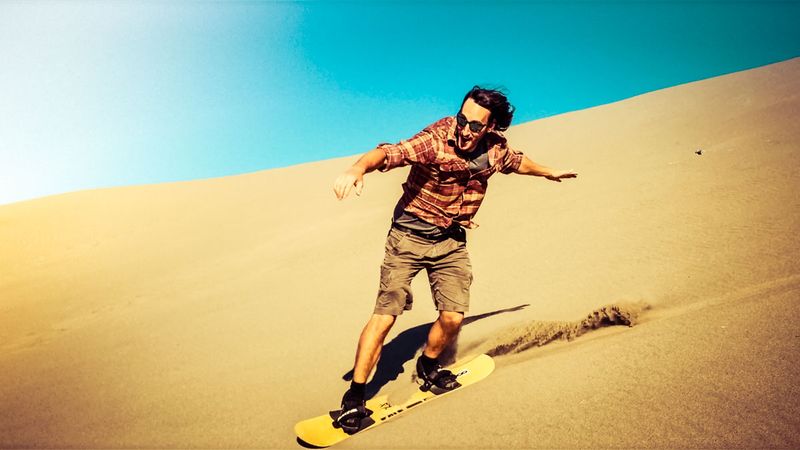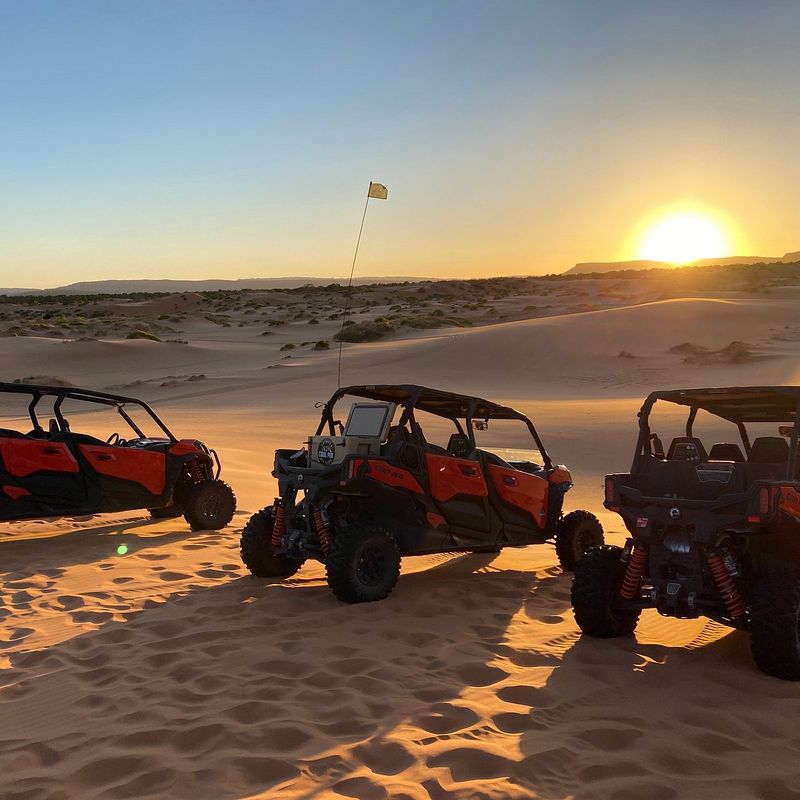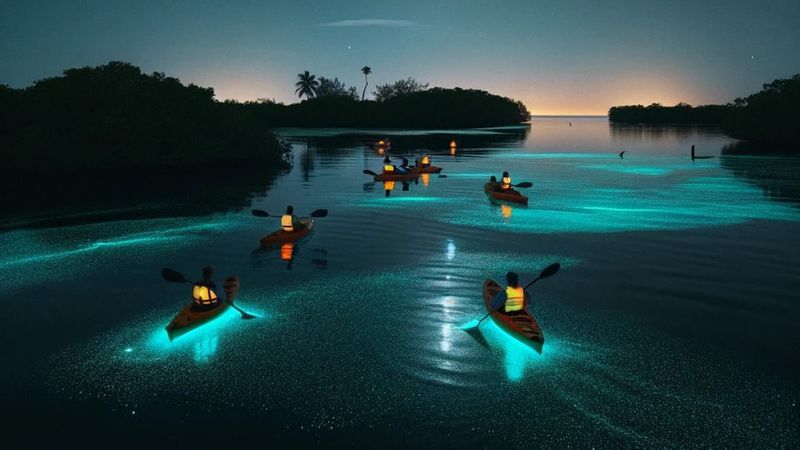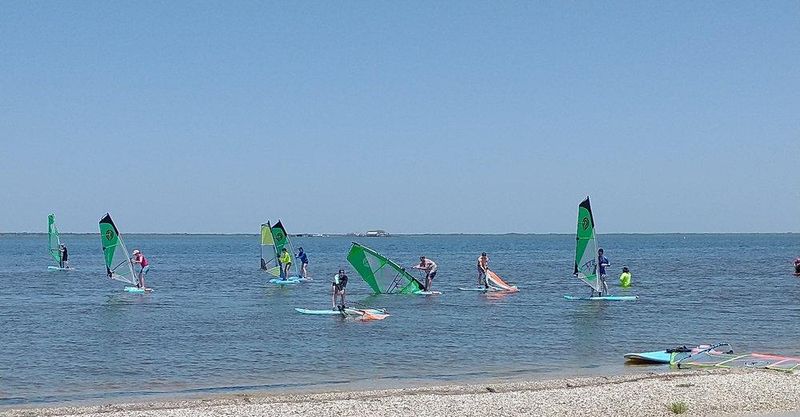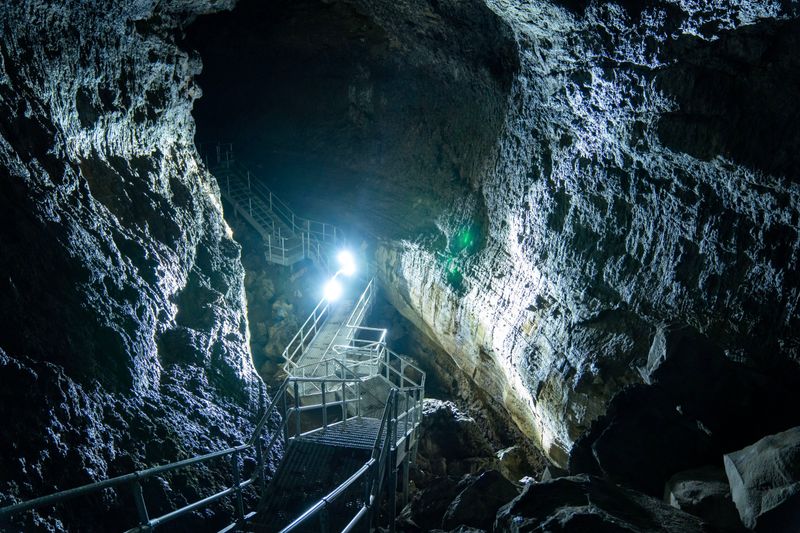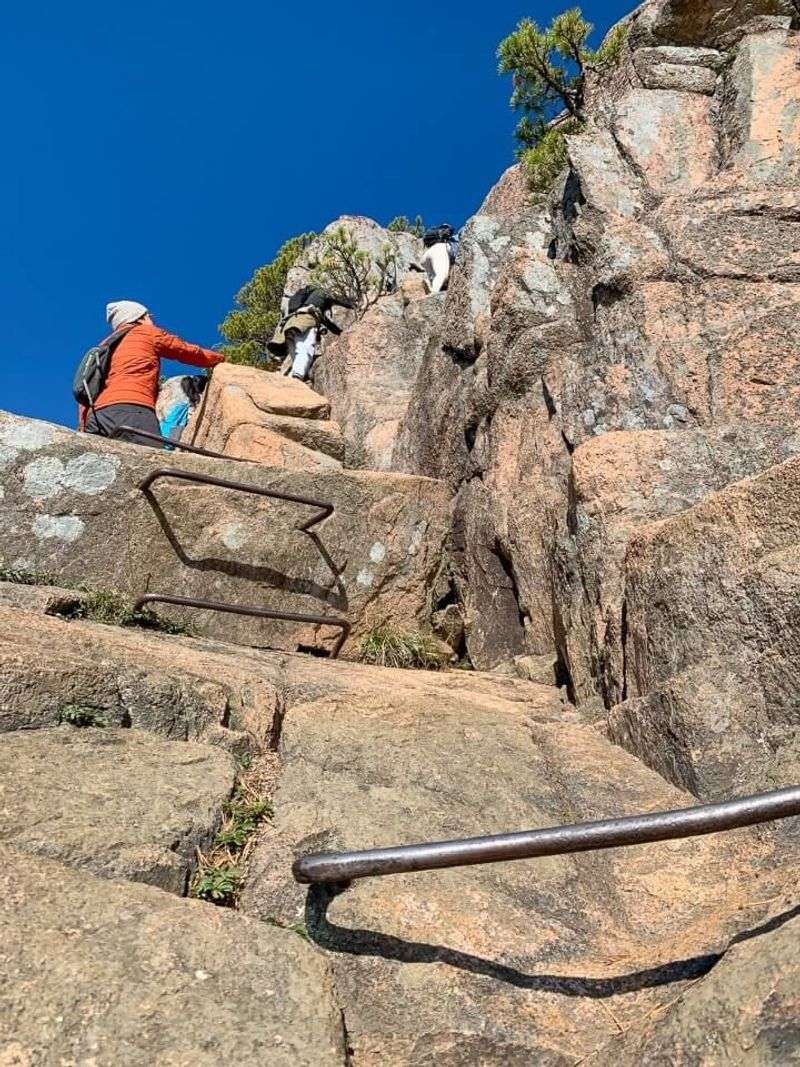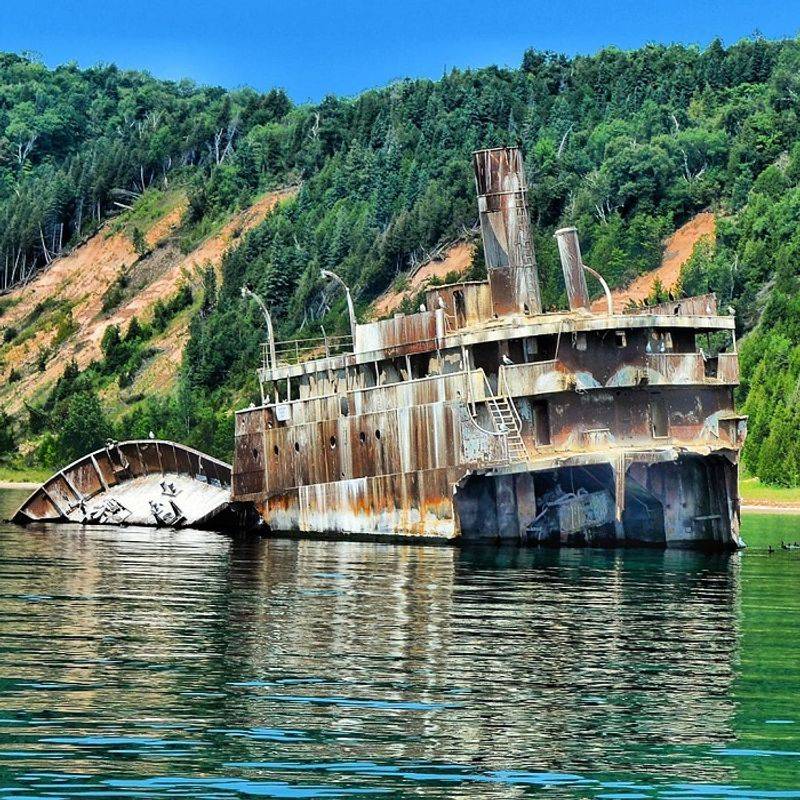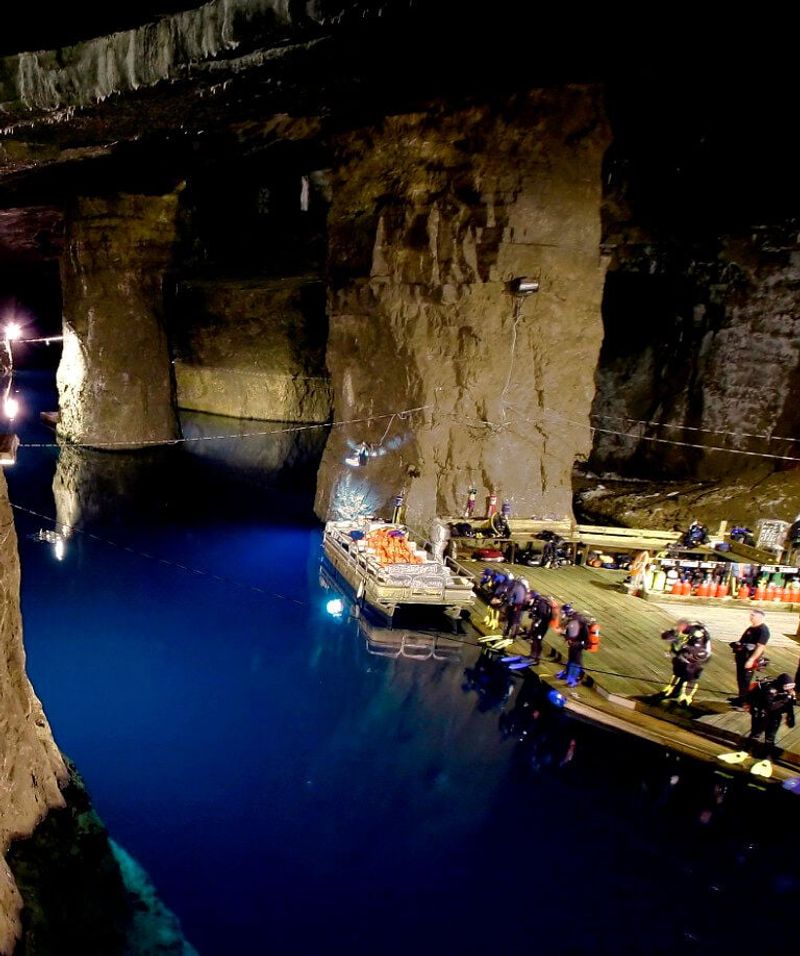Most people think you need to travel overseas for wild adventures, but America hides some seriously cool surprises. From walking underneath massive bridges to gliding over glowing water at night, these spots prove that excitement can pop up in the most unexpected places. Whether you love heights, water, or just trying something totally new, these hidden gems will make your heart race and give you stories your friends won’t believe.
1. New River Gorge, West Virginia — Walk under the bridge on a catwalk
Stepping onto a two-foot-wide metal path hanging 876 feet above a river, with nothing but your harness keeping you safe, that’s exactly what you get with the Bridge Walk tour at New River Gorge. This isn’t your typical sightseeing—you’re literally underneath one of America’s longest steel arch bridges.
Guides lead you across the catwalk daily, rain or shine, year-round. Fall and winter offer the clearest views when leaves drop and humidity fades. The whole experience takes about three hours, including safety briefings and photo ops.
Book ahead with the licensed Bridge Walk company because spots fill up fast, especially during peak seasons.
2. Nelson Rocks, WV — East Coast via ferrata with a sky bridge
Via ferrata sounds fancy, but it’s basically rock climbing with built-in safety features—metal rungs, cables, and bridges bolted right into the cliff. Nelson Rocks offers one of the best on the East Coast, zigzagging up jagged Tuscarora quartzite fins that look like dragon spines.
The real showstopper? A swinging sky bridge stretched between two rock towers, high enough to make your stomach flip. Spring through fall provides the best conditions, though you’ll want to avoid icy winter days.
NROCKS runs guided tours with all gear included, so even first-timers can tackle this adrenaline rush safely.
3. Ouray, Colorado — Ice climbing in a man-made frozen canyon
Most ice climbers trek into remote wilderness, but Ouray built something genius: a frozen playground right in town. The Ouray Ice Park features hundreds of ice routes created by spraying water over canyon walls, forming massive icicles and frozen waterfalls.
Winter transforms this gorge into a vertical wonderland where beginners and experts share the same space. Conditions depend on cold temps, so check before you go. The park offers clinics if you’ve never swung an ice axe before.
Best part? Admission is completely free, though you’ll need your own gear or rentals from local shops nearby.
4. Great Sand Dunes NP, Colorado — Sandboarding the tallest dunes in North America
Snowboarding without snow? That’s sandboarding, and Great Sand Dunes has the perfect playground. These dunes tower up to 750 feet tall—the highest in North America—creating slopes that rival some ski hills.
You can sled or board anywhere away from vegetation, carving lines down soft sand that shifts under your feet. Spring and fall bring cooler temperatures, because summer sand gets hot enough to burn. Wax your board well or it’ll stick instead of glide.
The National Park Service website lists local shops where you can rent boards before heading in for an afternoon of sandy thrills.
5. Bruneau Dunes SP, Idaho — North America’s tallest single-structured sand dune… on a board
While Great Sand Dunes has the tallest collection, Bruneau claims the prize for the tallest single sand mountain—one enormous dune rising 470 feet from a desert basin. Riding down feels like sliding off a giant anthill, except way more fun.
The visitor center rents sandboards and sleds, so you don’t need to haul your own. Spring and fall are ideal because Idaho summers turn the sand scorching hot by midday. Start early, bring water, and prepare for a workout hiking back up.
Idaho Parks maintains a dedicated sandboarding page with tips and current conditions to help you plan the perfect sliding session.
6. Coral Pink Sand Dunes SP, Utah — Fiery-red dunes for sandboarding or UTV thrills
These aren’t your typical tan dunes—Coral Pink’s sand glows in shades of orange, red, and pink, especially at sunrise and sunset. The colors come from eroded Navajo sandstone, creating a landscape that looks almost Martian.
You can slide the dunes on boards or kick things up with a guided UTV tour that roars across the sand. Spring through fall offers the best weather, though summer afternoons get toasty. The state park lists on-site tour operators right on their website.
Whether you prefer quiet sandboarding or motorized mayhem, this Utah gem delivers both in stunning technicolor.
7. White Sands NP, New Mexico — Gypsum-dune sledding
White Sands looks like someone dumped powdered sugar across 275 square miles of New Mexico desert. These dunes are made of pure gypsum crystals, which stay cool even in summer heat and create the perfect sledding surface.
Waxed plastic saucers work best—regular sleds won’t slide as well. Go early morning or late afternoon to dodge the midday sun and catch the dunes glowing gold and lavender. The park is open year-round, and rangers can point you toward the best slopes.
The NPS website explains where to buy or rent saucers nearby, so you can start sliding within minutes of arrival.
8. La Jolla, California — Kayak sea caves & seasonal leopard sharks
La Jolla’s coastline hides a maze of sea caves carved into sandstone cliffs, accessible only by kayak. Guided paddles take you inside these echoing caverns where light bounces off turquoise water and seals bark from rocky ledges.
Late summer brings an extra surprise: thousands of harmless leopard sharks gather in the shallow bays to give birth. You can paddle right over them, watching their spotted backs glide beneath your kayak. Tours run year-round when weather cooperates, but shark season peaks July through September.
Book with a permitted operator like La Jolla Kayak to explore this protected marine reserve responsibly.
9. Indian River Lagoon, Florida (Merritt Island/Titusville) — Bioluminescent night kayaking
Every paddle stroke ignites an underwater light show when you kayak Indian River Lagoon on warm, moonless nights. Tiny dinoflagellates and comb jellies glow blue-green when disturbed, turning your kayak into a floating disco and fish into shooting stars.
The darker the night, the brighter the show, so new moons are prime time. Summer months bring the most intense bioluminescence, though you can sometimes catch it into fall. Multiple eco-tour companies run guided trips from Merritt Island and Titusville.
Bring a dark shirt and prepare to feel like you’re paddling through liquid starlight—it’s genuinely magical.
10. Padre Island National Seashore, Texas — World-class windsurfing at Bird Island Basin
Bird Island Basin offers something rare: shallow, flat water with consistent wind, making it a windsurfing paradise. The Laguna Madre averages just three feet deep, so when you wipe out (and you will), you can stand up and try again.
Beginners love learning here because the soft landing and steady breezes build confidence fast. Spring and fall bring the most reliable winds without brutal summer heat. The National Park Service maintains a designated windsurfing area with launch sites and parking.
Check the NPS boating guidance for current conditions and any special regulations before you rig up your sail.
11. Lava River Cave (Newberry Volcanic Monument), Oregon — Self-guided mile-long lava tube
Oregon’s longest lava tube stretches more than a mile underground, formed when molten rock drained away and left a hollow tunnel. You can explore it yourself, but bring serious lights and warm clothes—it stays around 40 degrees year-round.
The cave floor is uneven, and some sections require ducking or careful footing. Operating season runs with timed entry to protect the cave ecosystem, so reservations help guarantee your spot. The USFS website has all the details on what to bring and when to visit.
Walking through a tunnel created by liquid rock thousands of years ago? That’s geology you can actually touch.
12. Lake Placid, New York — Ride an Olympic bobsled
Ever wondered what Olympic athletes feel rocketing down an ice track at crazy speeds? Lake Placid lets regular folks try a tamer version on the same track used in the 1980 Winter Olympics.
You ride in a wheeled bobsled piloted by a professional driver, hitting turns and feeling G-forces that press you into your seat. Runs happen on a schedule that varies by season and events, so check ahead. The Mt. Van Hoevenberg website lists current experiences and booking info.
It’s not quite 80 mph like the pros, but it’s fast enough to understand why bobsledders need nerves of steel.
13. Acadia NP, Maine — Iron-rung hikes with airy exposure
Acadia’s Beehive Loop isn’t technically rock climbing, but it feels close—iron rungs and ladders bolted into near-vertical cliffs guide you up with serious drop-offs beside you. Atlantic Ocean views stretch forever if you dare look down.
This route (and others like Precipice) demands focus, decent weather, and no fear of heights. Late spring through fall offers the best conditions; wet rocks turn dangerously slick. The NPS outlines difficulty levels and safety warnings on their site.
Hands-on scrambling with ocean breezes and peregrine falcons soaring below? Acadia delivers adventure most people don’t expect from a national park.
14. Chattanooga, Tennessee — Tandem hang gliding over Lookout Valley
Strapping into a hang glider with an experienced pilot and launching off Lookout Mountain feels like becoming a bird. No engine, no parachute—just wind, fabric, and aluminum keeping you aloft over Tennessee valleys.
Lookout Mountain Flight Park has run tandem Discovery flights for decades, so their instructors know every thermal and updraft. Flights happen year-round when weather allows, and you don’t need any experience. The school handles everything from safety briefings to landing.
Booking a Discovery flight gets you airborne in under an hour, floating silently above forests and farmland in a way that feels ancient and futuristic at once.
15. Great Basin NP, Nevada — Some of the darkest skies in the Lower 48
Light pollution washes out stars in most of America, but Great Basin sits so remote that the Milky Way casts shadows. On new-moon nights, you can see planets, satellites, and thousands of stars invisible from cities.
The park maintains an Astronomy Amphitheater and several overlooks perfect for self-guided stargazing year-round. Lehman Caves tours might be paused for lighting upgrades, so check current status if you want underground exploring too. The NPS stargazing guide helps you identify constellations and plan your visit.
Bring a red flashlight, warm layers, and prepare to feel very small under a sky that actually looks like the universe.
16. Munising, Michigan — Shipwreck snorkeling & sea caves
Lake Superior hides an underwater museum of shipwrecks and carved sandstone caves in the Alger Underwater Preserve near Munising. Cold, clear water preserves old wooden hulls and metal rigging, creating eerie snorkeling sites just offshore.
Summer offers the only realistic window—even with a wetsuit, Superior stays frigid. Shallow caves let you peek into rock formations from below, and wrecks sit close enough to surface that you don’t need scuba gear. The preserve’s official site maps out access points and wreck locations.
Snorkeling freshwater sea caves and century-old shipwrecks? Michigan delivers maritime adventure you’d never expect from a landlocked state.
17. Bonne Terre, Missouri — Scuba (or boat) an underground mine lake
A flooded lead mine in Missouri became one of the world’s most unique dive sites—crystal-clear water filling tunnels where miners once worked, with ore carts, tools, and tracks still sitting underwater. Visibility reaches 100 feet, turning history into an aquarium.
Certified divers can explore the depths, but non-divers can take an underground boat tour or walking tour to see the same eerie beauty. Water stays around 58 degrees year-round, so wetsuits are mandatory for divers. Bonne Terre Mine runs all tours directly—just book online.
Exploring a submerged industrial world feels like sci-fi, but it’s real Missouri history you can actually swim through.
